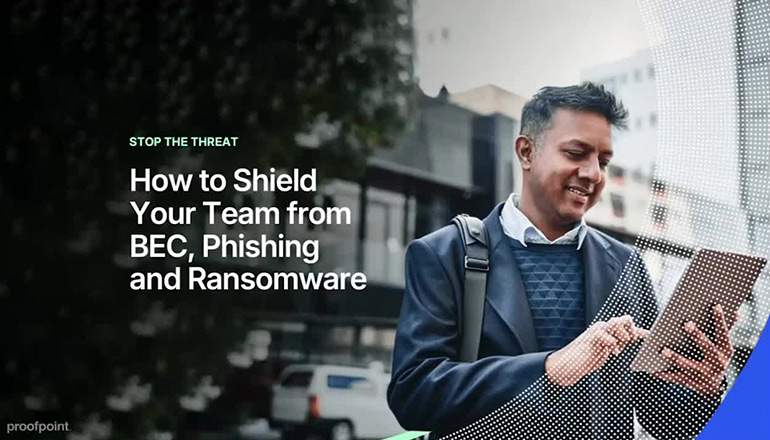Glossary What is Cybersecurity?
By / 2 Jan 2023 / Topics: Cybersecurity
Cybersecurity is the practice of protecting IT systems and users from cyberattacks. A combination of technology and policies are used to create a cybersecurity strategy that protects networks, systems, end-user devices and data. Cybersecurity can also be referred to as computer security, digital security, IT security, device security or simply security.
The need for cybersecurity has grown alongside the rise of digital technology. Many tactics are used to compromise a business, organization or individual’s digital information or tools. Cyberattacks are often meant to distort, access or steal information that’s stored and accessed digitally — making cybersecurity a critical component for all organizations.
Malicious actors that seek to compromise and access unauthorized systems can include governments, criminal organizations, people and even employees targeting their own organization. It is a common belief that people or organizations think they aren’t important enough to be a cybercriminal target. This can lead to neglected security updates and alerts or ignoring best practices. However, cybercriminals select their targets no matter how big or small the organization is or how valuable the information might be.
Cybersecurity programs include cyber defense policies, which involve a mix of technology and user training. There is no perfect approach to cybersecurity, but there are many strategies that can help safeguard an organization and make it easier to recover from an incident.
What does cybersecurity protect?
All your digital assets need to be addressed by your cybersecurity tools and processes. Key areas that cybersecurity protects include:
- IT infrastructure: This includes your data center, cloud or hybrid environments that your workloads use. Cyberattacks often target your systems to steal or hold data ransom. Also, your infrastructure can be hijacked to support malicious activity.
- Networks: Both wired and wireless networks, such as your Wi-Fi connections, require security tools that prevent unauthorized access. Once someone gains access to your system they can corrupt or steal information, add malicious code, gain access to other restricted networks in your system and more. Additionally, if your network is compromised, cybercriminals can potentially access partner or customer data and systems.
- Applications: The digital tools your organization uses and develops should have the right measures in place to safeguard them from downtime and malicious access.
- Data: All information you have access to, whether it’s customer, partner or internal data, needs some level of protection. Encryption is a common strategy that helps ensure your data is safe from harm and theft. You’ll also need to establish governance and compliance measures that give the right people the right level of access and detail where information needs to be stored.
- Devices: From laptops and workstations to mobile phones and tablets, you’ll want to ensure each device is secure. End-user devices can often pose a risk to your system as people bring devices to multiple locations. You’ll not only want to safeguard these devices with the right tools, but it’s also best practice to create use policies that address where devices can and can’t go.
- People and systems: You’re not just protecting your digital information and tools. Your cybersecurity strategy is also protecting the people your organization works with — from customers and partners to your staff. Their information is entrusted to your organization and your business makes commitments that it needs to meet. A cyberattack can prevent you from doing business and damage trust in your organization.
Types of cybersecurity threats
The size and sophistication of cyberthreats are changing daily. Not only do you need to stay aware of ongoing security threats and trends, but you must also maintain adequate budget and resources to keep your systems safe and minimize potential harm.
Common cybersecurity threats you should be aware of include:
- Insider threats, where an employee with access to systems uses the data for their own gain.
- Social engineering attacks, where someone is tricked into providing information or system access to a malicious actor. This can often involve phishing, where an email or other communication tricks someone into clicking a malicious link or providing sensitive information.
- Vulnerability exposure, where an operating system, application or hardware has a weak point that a cybercriminal uses to cause harm.
- Ransomware, where data is encrypted, and your organization can’t access it until you pay the cybercriminal the ransom they’re requesting.
Types of cybersecurity tools
Implementing the right tools and policies helps prevent attacks and improves response times. There are many different types of tools and systems you can adopt to protect your organization, including:
- Backup and disaster recovery solutions: These leverage both on-premises and cloud resources to frequently back up data, so it’s available in the event of downtime. You’ll want a solution that meets your needs around storage size and recovery speed. With this solution in place, you’ll have a viable alternative to paying a ransom or recovering information that’s been corrupted. These solutions offer the additional value of being available outside of cybersecurity contexts, such as when a server fails.
- Firewalls: A firewall monitors your network and blocks unauthorized traffic, such as malware You’ll want to create layers of firewalls around your applications and networks. There are many types of firewalls that protect each layer of your IT infrastructure, including your devices, cloud and applications.
- Security Information and Event Management (SIEM): A SIEM is a critical cybersecurity tool that provides real-time threat detection analysis of your organization’s data. Your team will be able to review log files and then act upon suspicious activities.
- Multifactor authentication (MFA): Setting up a system where users go through an authentication process during login will help you avoid improper access.
- Virtual Private Network (VPN): A VPN is a system that allows users to access private networks safely from anywhere. Your traffic location is obscured through private connections.
Cybersecurity strategies
Cybersecurity strategies are constantly changing as threats evolve. One consistency is providing your employees at all levels of the organization training that helps them avoid easily avoidable errors that could lead to large issues.
A few cybersecurity training best practices include:
- Showing the importance of strong passwords that are regularly changed
- Identifying the traits of suspicious emails or requests, which often are time bound, contain grammar errors and come from someone they may not work with directly, such as the CEO
- Details on what protocols to follow when a malicious email is received or when you think a system might be compromised
- Rules that establish what data can be shared and where and what digital tools can be used for work involving your organization
In addition to training, there are a few emerging cybersecurity strategies that organizations are using to stay secure. They include:
- Cybersecurity mesh: This is an approach that individually secures every device within a network using secure systems, such as a firewall. This creates an environment where if someone gained access to one layer or endpoint within an IT ecosystem, then there are many opportunities to prevent access.
- Zero trust security: Organizations use this approach that views every device as a threat until it’s authenticated. This strategy has become effective with the rise of remote work.
- Working with a Network Operations Center (NOC): An NOC is a third party that monitors your IT systems, often providing 24/7/365 support. For organizations that can’t dedicate adequate resources to their environment, working with an NOC is a great option to maintain security.
Learn more about cybersecurity




